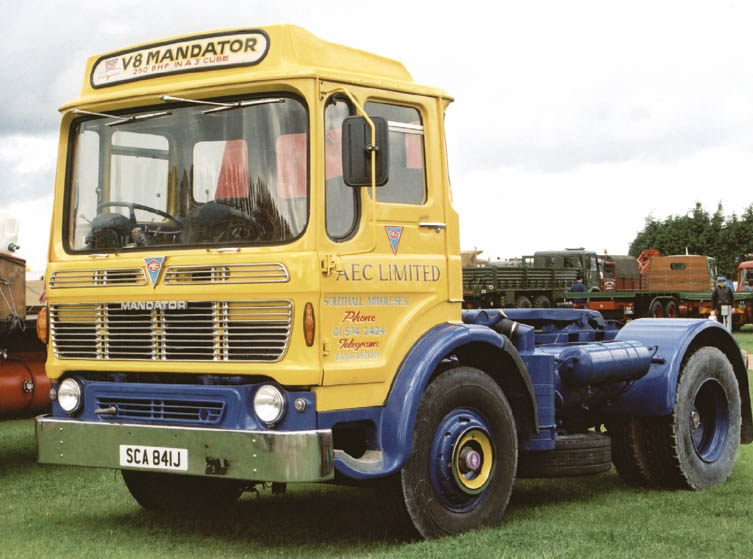Great thread this. I love tales of derring-do by designers and engineers, even though this story had a sad ending. I did not want to post my thoughts/questions about the AEC V8 until I had read the book, a copy of which I now have (Thanks very much Gingerfold. Please contact me re payment).
Rather than lacking a few finishing touches of development, it appears, to this old curmudgeon at least, that the engine was ill-conceived from the outset (Anorak off, flak jacket on). It was a short-stroke, high-revving screamer, with such an engine’s typically low peak torque (not to mention concerns about fuel consumption and durability associated with engines of this type). I had initially assumed that this must be due to the influence of Leyland- having made their otherwise wonderful Ergomatic cab about a foot or more too small in every dimension, they needed a compact engine to power the new breed of motorway-oriented vehicles, that they and everyone else in Europe were developing. I was surprised, therefore, to read that the initial (prior to the merger) design brief was “for a compact power unit able to produce 250 BHP.” It was launched as a 12.1 litre to compete in this new market sector, while most of the competition introduced engines of 14-16 litres capacity, producing 300-350 BHP.
Other details mentioned in this thread and the book include narrow crank bearings, inadequate water pump, restricted coolant channels in the cylinder block, low coolant flow rate and suspect governor (was this at least partly responsible for the engine’s reputation for great performance, and some of its durability/overheating issues? A poster above mentions 4500 RPM!) . I bet that, in keeping with the “compact” theme, it had a really short conn rod, one effect of which is increased piston side load (causing more friction and heat) and higher big end load. Does anyone have any drawings or dimensions, so I may check this against comparable engines?
To make the engine more competitive on power and torque, it would have wanted an increase in stroke to give about 15litres (Berliet solved the problems with their new-in-1970 12.8 litre V8 by, amongst other things, enlarging it to that capacity. forum.aceboard.fr/12980-1221-277 … -TR300.htm). This would probably have entailed a larger crankcase and, certainly, a taller cylinder block. Make it tall enough to accommodate longer conn rods while you’re at it please, just for me! The cooling issue would have meant a redesign of the coolant channels in the block. To cure the big end wear problem- longer bearings, entailing a longer crankshaft, therefore increased bore spacing, forcing new cylinder head castings. In other words, the thick end of a new design, at far greater cost than a bit of detail development.
How would the proposed 350BHP turbocharged version have fared, with another 30% more heat to dump into the coolant? The obvious solution to all the above was to turbocharge the AV760 and leave the “supertruck” end of the market to the competition, in the absence of sufficient time and money to take them on properly.
Maybe the “small package” part of the engine’s design brief was due to Leyland’s influence after all- the project started in 1961, the takeover was in 1962 and the Ergo may well have been tooled up, ready for its launch in 1963. If the “merger” was in its “courting” phase at the start of the work, the board of AEC may have felt the need to make the company more attractive to Leyland, for the benefit of their own shareholders, hence an Ergo-friendly specification for the engine. Who knows?



